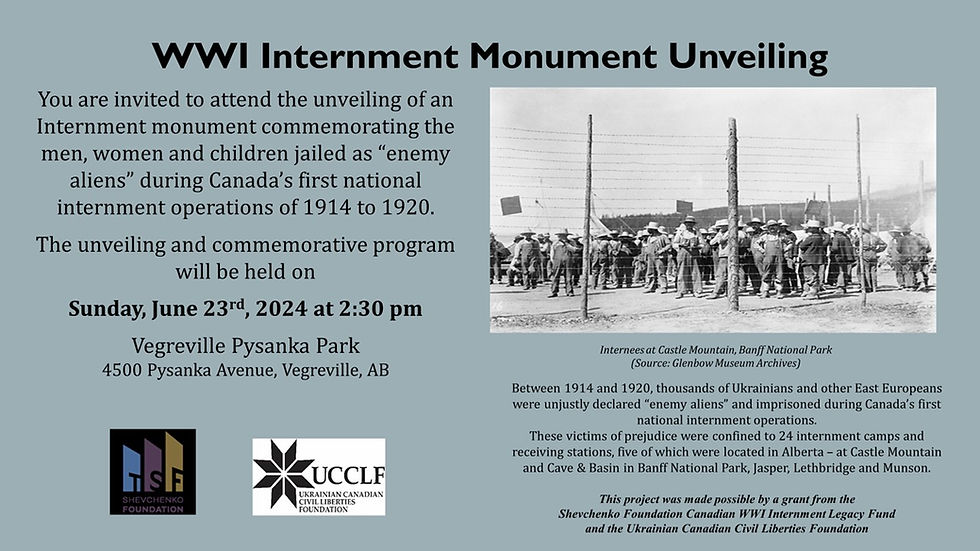Response to Misconceptions about Canadian Museum of Human Rights
- Jan 7, 2011
- 2 min read
UCCLA Media Release (Ottawa - 7 January 2011)
Commenting on yesterday's (6 January) media advisory from the Canadian Museum of Human Rights, the chair of the Ukrainian Canadian Civil Liberties Association, Mr. Roman Zakaluzny, said:
"We are not aware of any misconceptions about the Canadian Museum for Human Rights. It is a publicly funded, national museum whose operating budget will be supported, in perpetuity, by all Canadian taxpayers. At present the Museum's plans call for 12 galleries, known as zones. Ten of these will apparently be thematic, but two are already fixed in terms of their focus - on Jewish suffering during the Second World War (the Shoah) and Canadian aboriginal issues. By being afforded permanent and prominent spaces in this museum the horrors endured by these groups are being elevated above those of all other peoples.
"Furthermore, while the contents of most galleries may not yet be settled, the Museum's spokesperson, Ms. Angela Cassie, admits that privileged gallery spaces have been prearranged for two communities. We, and the Canadian public in general, oppose this preferential treatment.
"The Ukrainian Canadian community has raised publicly its concerns with respect to the management, governance and proposed contents of this publicly funded Canadian Museum for Human Rights. Those legitimate concerns were not answered by the Museum's Jan. 6 communique. Until such a time as they are, we again call upon the Government of Canada to:
1. suspend any further financial support for this project
2. establish an independent group to review the proposed contents of this national museum
3. appoint new members to its board of directors who are more representative of Canadian society
"Welcome as the prospect of a Canadian Museum for Human Rights in Winnipeg is, we cannot accept the public purse being used to fund partiality or prejudice."



Comments